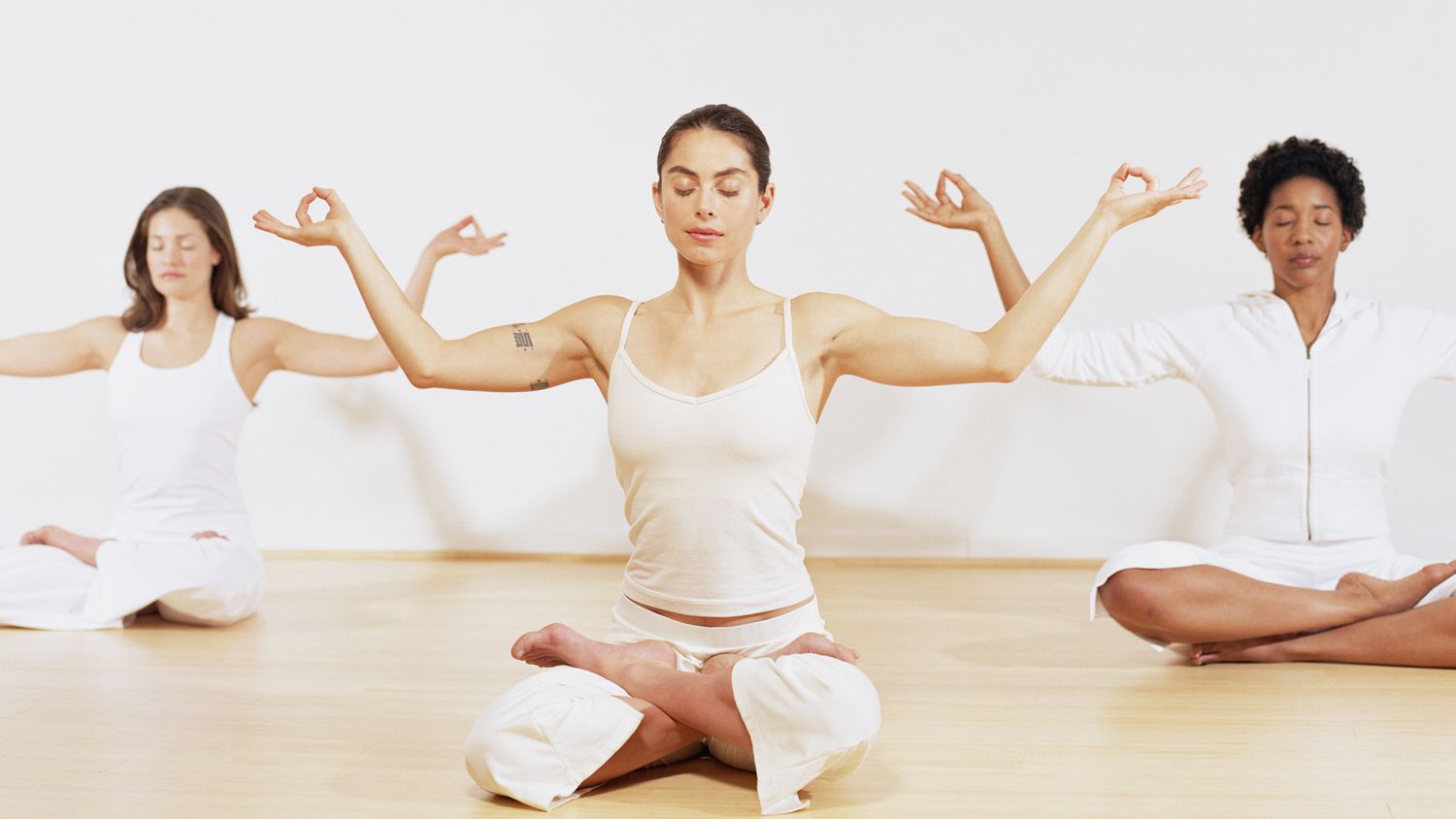Samadhi is the highest stage of meditation. It is a state of total concentration. The word samadhi is used in many traditions and carries different meanings. It comes from the Sanskrit words sam-a-dha, meaning “fully placed together.” The term is also translated as “absorption.”
Samadhi is similar to kaivalya in Buddhism. Those who achieve samadhi experience a profound change in their lives. They become fully aware of their minds, which they can use to make a difference in the world. However, achieving samadhi is not guaranteed simply by practicing meditation. In fact, it requires merit and the grace of a Guru.
This is the first level of samadhi, a yogi loses association with the material world and connects to their inner self. In this state, the yogi experiences what is known as tantric experiences, such as internal sounds, divine smell, or the sensation of divine touch.
During Nirvikalpa Samadhi, the individual experiences a fully awakened heart. The first sensation they experience is that the soul is vaster than the universe itself, while the universe appears as a dot inside the vast heart. In this state of samadhi, the individual experiences infinite bliss and power. In this state, they are connected with the Divine throughout the process.
The word ‘samadhi’ comes from the root word dha, which means place, bestow, or impart. This word has many other meanings, including joining, combining, union, completion, and concentration. When the meditator reaches samadhi, the difference between the self and the object of meditation is completely eliminated. In this state, the person has a complete understanding of the nature of reality, which is the highest goal of meditation.
What are the essential points of Meditation?
The mind is a moving entity with a source, a place where it comes from and goes. It is the source of all thoughts and emotions, and when it is in motion, it is entirely different from when it is still. As such, the mind experiencing suffering has a different color or form than the mind of a meditator.

Mindfulness meditation
Mindfulness is the ability to remain present and aware of one’s body. It is an essential aspect of meditation. It allows us to become more aware of the present moment and release distractions. The practice of mindfulness is often practiced by focusing on the breath.
When we practice mindfulness of the meditation object, we can filter out the jumpy distractions and discover the spaciousness of our natural state. Moreover, meditation is a gateway to personal transformation. There are many benefits of meditation, which are well documented. But if we practice awareness meditation, we can take this practice to a new level.
Mindfulness of the meditation object can be beneficial for many health conditions. It has been shown to decrease blood pressure, ease chronic pain, and improve sleep. It can also help people deal with painful emotions and feelings. This skill can also improve relationships. People who practice mindfulness can build deeper bonds with others and experience more happiness.
Before beginning a mindfulness meditation practice:
- Find a comfortable place to sit.
- Sit upright with your legs slightly apart if you are in a room. Your gaze should be downward six feet in front of you.
- Focus your attention on your out-breath and notice how your stomach moves.
During this time, your mind may wander, but just accept it as part of the practice.
Awareness of Present Moment
One of the most essential aspects of meditation is awareness of the present moment. This awareness is an ongoing process involving noticing and accepting a range of sensations.
This awareness is achieved by focusing on your body’s senses and observing them without judgment. As a result, it can lead to a more present experience and less internal turmoil. In addition, being aware of your breath helps you become more present. Practicing mindfulness could better recognize when you are satisfied.

The practice of meditation can also help you deal with fear or panic. For instance, you might experience a sharp pain in your leg or a dull cramp in your back. Rather than focusing on the pain, you should accept that it is temporary and will pass. You can then direct your attention to another body part or adjust your posture to reduce the pain.
Practicing yoga regularly can also help you live in the moment. By stopping to breathe and practicing basic poses, you can become more aware of where you are and what you are doing. The goal is to savor each moment as it passes. You can also work with a therapist to help you live in the moment.
Reducing negativity thoughts
When we meditate, we send negative thoughts to a different place. It directs them to a negative thought cage or refers them to a more positive one. We can think of our negative thoughts as chains of iron, while positive ones are like gold chains that bind us. The first step to reducing negative thoughts is understanding who we are, dropping all the BS, and getting in touch with our true selves.
One study, based on participants completing a mindfulness-based meditation practice, showed that participants had fewer negative thoughts when presented with either positive or negative images. However, the negative reviews were not affected compared to people in the control group. Therefore, the effect of meditation on our minds is more likely due to how our minds process information.

As mentioned above, the practice of meditation requires patience. In addition to being patient, self-compassion and a steady concentration are essential qualities to possess to benefit from this practice. People suffering from anxiety or depression often engage in negative thinking, which can trigger physical symptoms and anxiety problems. However, practicing meditation can help them shift their focus from negative thoughts to positive ones by focusing on their breath or a mantra. This helps them become aware of their thought patterns and improves their mood and general well-being.
Another helpful tip is to combat negative thoughts with humor. Negative thoughts like to be in control, and this will only give them more power. Try to mentally thank them when they take control. But don’t fight with them because it won’t work and will only increase their volume.
Dawning Awareness
The key to dawning awareness is to remain conscious of your conceptual thoughts. The subject of meditation, or can be the subject of an abstract idea. It is essential to be aware of these thoughts and to be able to differentiate them from the rest of your thought life. This means that you must cultivate a practice of meditation that consists of awareness, recognition, and non-reaction.
As you cultivate your realization, you will learn to cut out conceptual thoughts. In doing so, you will see the essential nature of the mind. In addition, you will be able to see the mind as the reflexive brilliance dawns without obstruction. Ultimately, this realization is the ultimate goal of any meditation practice.
You must practice the meditation technique in the center point between day and night when you meditate. This allows you to feel and experience what it’s like to meet your true nature. It will never fail with this technique. If you practice the center point day and night, you’ll experience the one-pointedness of awareness.
This technique is not easy to practice, but it will come if you practice it consistently. Practicing the meditation technique is a continuous process. The first step in this process is understanding the fundamental nature of the mind.
How do you know If your mind has been Still during Meditation?

To test whether your mind has been still during meditation, notice when your thoughts wander from the object of your meditation. If they do, simply acknowledge them without judgment and return to your anchor. The practice of meditation can change your brain structure, allowing you to narrow your focus to the present moment. Our brains are amazingly plastic, so they develop different regions with practice.
The goal of meditation is to free your mind of thoughts and focus instead on the present. However, meditation may not be suitable for everyone. For example, it may be difficult for you to feel calm if you’re in a highly stressful or exciting situation. You should embrace the feelings that meditation brings.
Once your mind has been still during meditation, you must gently return it to its breath and sensation. You can label your thoughts with mantras and continue focusing on your breath. As your breath is emphasized, this will help you focus on the present moment.
Can Meditation Change our Personality?

One of the biggest questions you may ask yourself is, “Can meditation change your personality?” Research suggests that it can, in some cases. Those who practice meditation regularly tend to be calmer and more disciplined. They are prone to goal-oriented behavior and enjoy keeping a schedule.
They are also conscious of how their behaviors affect others. In addition, meditation increases self-awareness, lengthens attention span, and stops compulsive thoughts. These benefits can lead to higher productivity, efficacy, and self-control.
One study showed that people who practiced mindfulness meditation had higher levels of agreeableness. The meditation boosted their positive emotions. This positive emotion accumulation was found to contribute to a more peaceful society. People with low agreeableness tend to be more competitive and aggressive. They can also quickly insult others without thinking and show little interest in other people’s problems. One study found that people who practiced kindness-based meditation were more agreeable and showed more empathy in social interactions.
If you’re new to meditation, you may be concerned that it will be challenging to focus. However, this is natural. Your mind is constantly busy, and it may be difficult to calm your mind. Meditation takes time to develop. In time, however, you will see some changes in yourself. Your focus will be improved, your anger will be reduced, and you’ll feel calmer.
Conclusion
Meditation has many guidelines and practices and may differ according to your preferences. For beginners, guided meditation will help you develop your meditation practice and achieve the goal of achieving a state of stillness. The meditation boosted their positive emotions.








